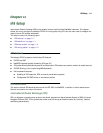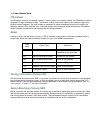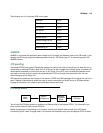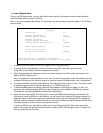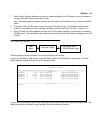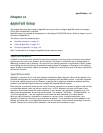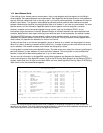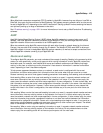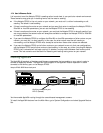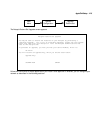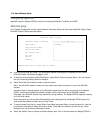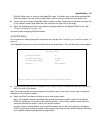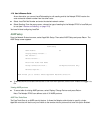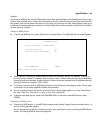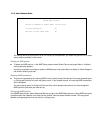AppleTalk Setup 12-3
MacIP
When Macintosh computers encapsulate TCP/IP packets in AppleTalk, because they are either on LocalTalk or
EtherTalk, they must use the services of a MacIP gateway. This gateway converts network traffic into the correct
format for AppleTalk or IP, depending on the traffic’s destination. Setting up MacIP involves enabling the feature
and optionally setting up a range of addresses to be static.
See “IP address serving” on page 10-21 for more information on how to set up MacIP and other IP addressing
schemes.
AURP
AppleTalk Update-Based Routing Protocol (AURP) allows AppleTalk networks to communicate across an IP
network. Your local AppleTalk networks (connected to the Netopia R7200) can exchange data with remote
AppleTalk networks that are also connected to an AURP-capable router.
When two networks using AppleTalk communicate with each other through a network based on the Internet
Protocol, they are said to be tunneling through the IP network. The Netopia R7200 uses AURP to allow your
AppleTalk network to tunnel to designated AppleTalk partner networks, as well as to accept connections from
remote AppleTalk networks tunneling to your AppleTalk LAN.
Routers and seeding
To configure AppleTalk networks, you must understand the concept of seeding. Seeding is the process by which
routers (or more specifically, router ports) agree on which routing information is valid. AppleTalk routers that
have been reset, for example, must decide which zones and network numbers are valid before they begin
routing. In this case, a router may use the information it has stored or information it receives from another
router, depending on how it has been configured.
To help ensure agreement between routers on a network, a seed router is configured with the correct
information, and other routers obtain their information from that router when they are turned on or reset.
Routers commonly use one of three types of seeding procedures: hard seeding, soft seeding, and non-seeding.
Hard seeding: When a router that uses hard seeding is turned on or reset, it requests network number and
zone name information from any existing routers on the networks it will serve. If no other routers reply, the
router uses the network numbers and zone names specified in its own configuration. If other routers reply, and
their information matches the router’s own configuration information, the result is the same—the router uses
the values in its own configuration. However, if other routers provide network numbers or zone names that
conflict with those in the router’s configuration, the router disables any of its own ports for which there are
conflicts.
Soft seeding: When a router that uses soft seeding is turned on or reset, it requests network number and zone
name information from any existing routers on the networks it will serve. If no other routers reply, the router
uses the network numbers and zone names specified in its own configuration. If other routers reply, the router
uses the information they provide, regardless of whether or not there are conflicts between the information
received and its configured information. Once a soft- or hard-seeding router begins to route, it can serve as a
seed router, providing network number and zone name information to other routers upon request. The default
state of the Netopia R7200’s AppleTalk ports is soft seeding.
Non-seeding: When a router using non-seeding is turned on or reset, it requests network number and zone
name information from any existing routers on the networks it will serve. For any network where no other
routers reply, the non-seeding router will not have any active ports until the next reset.



